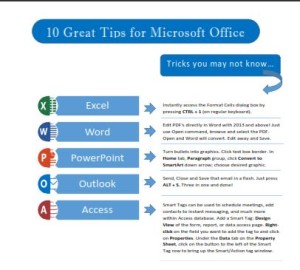Why Format with Word Styles?

Why care about using Word Styles? Because you want to work smarter, not harder. You might already know about Format Painter, that magic icon in the Clipboard group that copies complicated formatting from one place to another with a mouse click. It is awesome for a shorter document but would be crazy-making for formatting that humongous report!
Want to:
- Create a formatted, professional document in a flash?
- Create a fast Table of Contents in Word?
- Use one-click navigation through that long document?
Do this and more with Word Styles!
You can use the built-in styles in Word or modify them to get the results you want and Styles are saved with your document. By default, Word applies Normal Style to all text (in Word 2007 and above, it is Calibri (Body Font), 11. In earlier versions, it is Times New Roman, 12.
Heading Styles
Any text can be changed to a built in style. Styles live on the Home tab, Styles group. You will see a limited number of styles displayed (depending on your screen size and resolution).
Click the More button at the bottom right of the group to see a bigger list and roll your mouse over each to see the effects. As you select Heading (or other) styles, they will move to the front of the list on the Ribbon.
The Title and Heading Styles are Paragraph, not Character Styles, so you don’t need to select all of the text to apply a style. Just click anywhere in the paragraph (or heading), and click on the style desired.
Modify a Style with One Click
Let’s say you applied Heading 2 to multiple areas of the document but then decide you want a different font size and color for that heading level:
- Choose and format any Heading 2 the way you would like it to look
- Select it and right click over that heading name in the Styles group. The icon will have a border showing it is the selected style.
- Choose Update (style name) to Match Selection, and Yahtzee, every style with that name is automatically updated and that formatting will be applied from now on to that heading level.
Design Sets – Professional Formatting with a Click
You finished your document and then wonder if you could have a little fancier look to the whole thing without re-inventing the wheel. Again, yes you can! After applying Styles, you can change the overall look and fonts of all the styles in your document with a single click using Design Sets.
- Click in a heading in your document.
- Click the Design tab and the More button in the Document Formatting
- Mouse over all the options in the group to see the effects how each of your heading styles would look in that set.
- Click on desired Style and it is set for your whole document, and so are you!
Use the Navigation Pane to whip through a long document
Another benefit of Styles is fast navigation and drag and drop rearranging of headings and paragraphs:
- Display Navigation Pane by clicking View tab/Show group/Navigation Pane (See below for shortcut).
- The Navigation Pane displays at left of your document and you can click on headings to jump there.
- Collapse and expand heading levels by clicking the arrows at left of heading names.
Change the order or paragraphs or sections by just dragging the heading in the Navigation Pane to desired location and your document is changed accordingly, i.e., You need a heading on Page 6 to be on Page 4, collapse headings and drag it there, or need your headings in alpha order…Drag and drop to the rescue!
Styles for Bullets and Numbering Lists
Don’t stop with your headings and paragraph styles, You can also create customized multiple level number or bullet styles using the drop down arrow on those icons in the Paragraph group on the Home tab and choosing Define New…, customize as desired and they will be added to the Styles Gallery.
Smart Status Bar tricks for Navigation:
In Word 2013 and above, click the Page number on the Status Bar and Navigation Pane instantly displays!
If you have Section numbers displayed on the Status Bar, clicking that displays the Find and Replace dialog box at the Go To tab. (Word versions prior to 2013, display this also when clicking the Page number).
Remove Style Formatting
There may become a time when you want to totally remove all those styles from your document (or from the one that you inherited from a style-crazy person), and return it to Word’s default font and size:
- Press CTRL A to select the entire document.
- Click on the Normal icon in the Styles group on the Home tab and all your text will now be Calibri (Body text), 11.
Note: if you have formatted text without Styles, just press CTRL + SPACEBAR to convert to default text.
See, I told, you easy-peasy. Now go out and take control over that Word document!
P.S. All that being said, be aware that Styles are very powerful but also complex. Keep it simple if Styles are new to you because a lot of playing can produce some confusing results as Word tracks every change you make to a style as an additional style. Start with using the built in Styles and using the various benefits as outlined in this post. That might be all you ever want or need.
 Click to download great tips to speed up your Office projects.
Click to download great tips to speed up your Office projects.